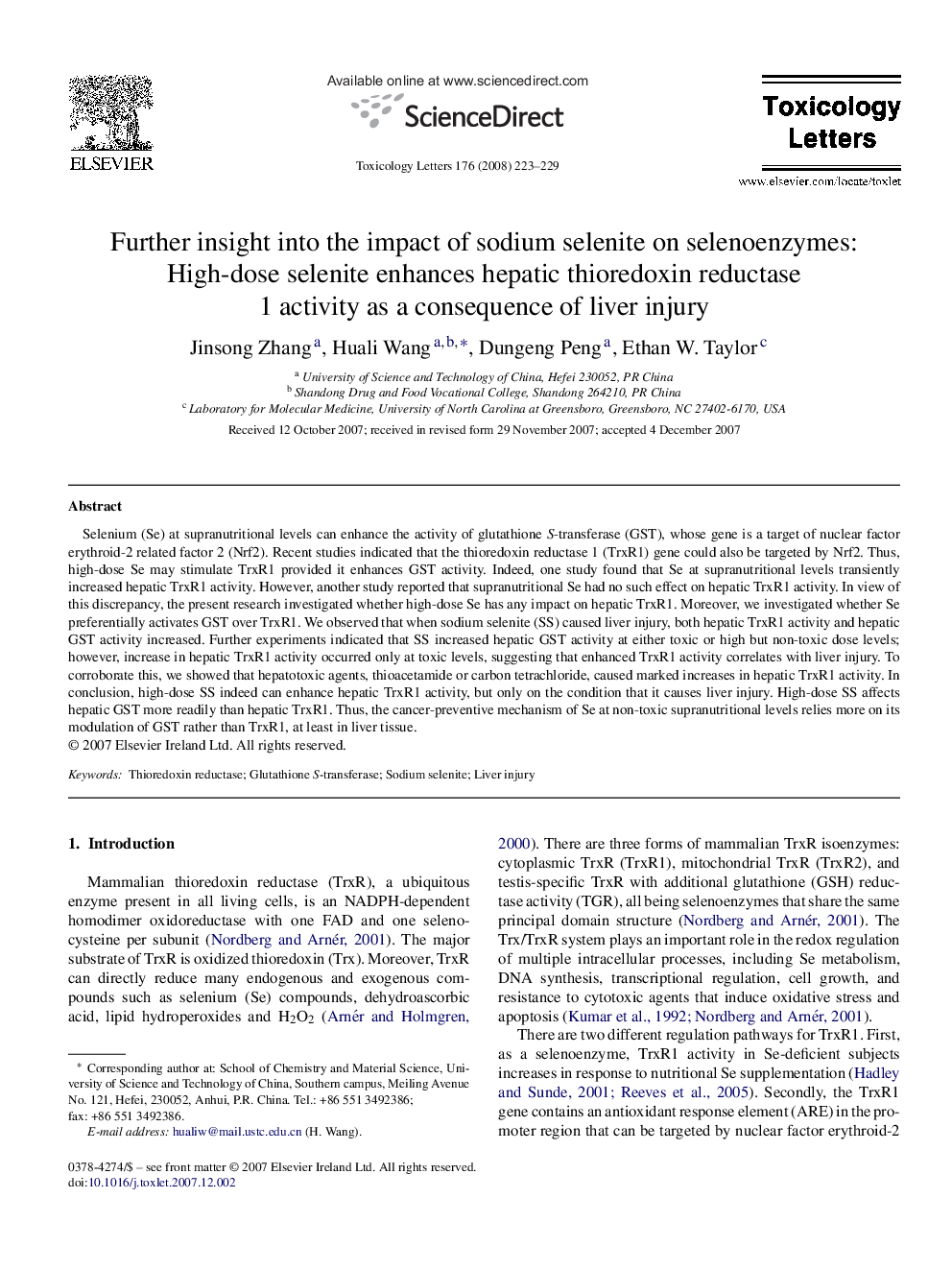| کد مقاله | کد نشریه | سال انتشار | مقاله انگلیسی | نسخه تمام متن |
|---|---|---|---|---|
| 2601657 | 1133338 | 2008 | 7 صفحه PDF | دانلود رایگان |

Selenium (Se) at supranutritional levels can enhance the activity of glutathione S-transferase (GST), whose gene is a target of nuclear factor erythroid-2 related factor 2 (Nrf2). Recent studies indicated that the thioredoxin reductase 1 (TrxR1) gene could also be targeted by Nrf2. Thus, high-dose Se may stimulate TrxR1 provided it enhances GST activity. Indeed, one study found that Se at supranutritional levels transiently increased hepatic TrxR1 activity. However, another study reported that supranutritional Se had no such effect on hepatic TrxR1 activity. In view of this discrepancy, the present research investigated whether high-dose Se has any impact on hepatic TrxR1. Moreover, we investigated whether Se preferentially activates GST over TrxR1. We observed that when sodium selenite (SS) caused liver injury, both hepatic TrxR1 activity and hepatic GST activity increased. Further experiments indicated that SS increased hepatic GST activity at either toxic or high but non-toxic dose levels; however, increase in hepatic TrxR1 activity occurred only at toxic levels, suggesting that enhanced TrxR1 activity correlates with liver injury. To corroborate this, we showed that hepatotoxic agents, thioacetamide or carbon tetrachloride, caused marked increases in hepatic TrxR1 activity. In conclusion, high-dose SS indeed can enhance hepatic TrxR1 activity, but only on the condition that it causes liver injury. High-dose SS affects hepatic GST more readily than hepatic TrxR1. Thus, the cancer-preventive mechanism of Se at non-toxic supranutritional levels relies more on its modulation of GST rather than TrxR1, at least in liver tissue.
Journal: Toxicology Letters - Volume 176, Issue 3, 15 February 2008, Pages 223–229